|
Last week I was transported to Madeira Island for a few hours where I participated in a Madeira wine seminar and walk around tasting. It was an informative and detailed seminar covering history, the region, grape varieties, vinification and aging process. In addition, my palate was treated to some very noteworthy Madeira wine ranging in style and age. Madeira is a Portuguese archipelago located in the North Atlantic Ocean, southwest of Portugal and off the northwest coast of Africa. It is known for its fortified wine called Madeira bearing the island’s name. These wines are aged under heat and noted for their high levels of acidity. Forty-seven percent of the island is forests and mountains. There are 500 hectares of vineyards on the island with eight producers and 2000 growers! Six of the producers export to other countries. The average vineyard size is about one acre, with the largest being thirty acres and the smallest only three vines! Due to its mountainous topography, vineyards are terraced and supported by stonewalls. Some of the terraces begin at sea level and climb up to the edge of the mountain, not unlike the vineyards of Pantelleria Island that I recently visited in Sicily. Grapes are harvested by hand due to the steep slopes. The soil of Madeira is of volcanic origin and rich in acidity. The soil combined with the sea, hot, humid summers and mild winters add to the uniqueness of the wine. The history of Madeira wine is long and one could write a book about it. An interesting note, John Adams, Benjamin Franklin and Thomas Jefferson, in addition to several U.S. presidents such as George Washington, were connoisseurs of Madeira wine. In fact, Madeira wine was served to celebrate the Declaration of Independence, 1776! Madeira wine has existed for more than five centuries, but I am going to give you a very condensed version starting in the 17th century with exportation of the wine. Transportation of Madeira wine to various regions including the U.S. was made in the hold of ships. Because the holds reached very high temperatures when passing through the tropics, it was discovered that when some of the wines returned to Europe, they had greatly enhanced in quality and complexity due to the hastened aging process from the heat! Once this was discovered, barrels of Madeira wine were purposely sent to the Indies to quicken the aging process and valorize the wine. This “round trip wine” became the famous “Vinho da Roda”. Madeira wine producers in the mid 18th century were motivated by the positive effects made by the Round Trip Wine and invested in a technique called “estufagem” that produced the same effect by using direct heat, circulation of hot air or water steam that circulates in copper inside the wine. The Estufagem method is used today along with the Canteiro process that is used for the more expensive wines made from the noble grapes as well as the Terrantez grapes. With the Canteiro process, wines are aged in ancient barrels on top floors of warehouses where they rest on wooden support beams. The slow warming of the wine and influence of the wood give the wine its unique character and flavor. These wines can age for more than 100 years and still maintain their uniqueness. In fact, once a bottle of Madeira is opened, it will keep for years to come without losing flavor. Most wines will oxidize once opened, but Madeira wine endures and will still taste fresh for a very long time! I’ve heard stories of Madeira wine that were recently opened and some date back to the 1700s. The wines were quite vibrant! Here is a run down of the grape varieties on the island. The first four varieties listed are the noble grapes. Sercial grapes produce a dry, crisp wine. Verdelho is another white variety that produces medium dry wines that tend to be tropical. Boal is medium sweet, more complex and quite aromatic. Malvasia (Malmsey) produces sweet, full-bodied wines with honey and spice and is the richest and sweetest style of Madeira. Tinta Negra is used in more entry-level wines but is quite versatile in producing dry to sweet wines and produces stronger tannins. The wines at the seminar ranged from a 3 year old blended sweet wine to a 50-year-old Terrantez wine. All six wines that we tasted had a common theme of raisins, figs and nuts and varied in intensity and sweetness. The Verdelho 15 Year Old, Colheita Malmsey 1999, Verdelho 1973 and Terrantez 50 Year Old offered more layers of dried fruit, spice and richness. All the wines were quite amazing. After the seminar, we did a walk around tasting with six producers. I will talk about these producers in future posts, as each one has a unique story. When shopping for Madeira wine, pay attention to the label. It will give you origin, grape varieties, dated vintage (if it exists) alcohol and sugar content.
Every bottle of Madeira wine is marked with a “sweetness” level on the wine label ranging from Dry, Medium Dry, And Medium Sweet to Sweet. Alcohol content ranges between 17% and 22% Madeira wines, depending on the sweetness, complement a wide variety of food from cheese and fruit to desserts. There are truly no words to describe the aromatic bouquet and intoxicating mouthfeel that Madeira delivers. Madeira wine needs to be experienced. Go forth and find! Cheers! Penina Valentine’s Day is almost here and quite a few romantics are getting a head start by celebrating this weekend. Flowers, candy and hearts of all different sizes and designs are on display everywhere, as well as specially designed bottles of sparkling wine to mark the occasion. I especially love the mini bottles with little heart embellishments. With pink and red being the main theme for Valentine’s Day, rosé sparkling wine is a perfect choice to serve. Sparkling rosés are festive and range in color from light salmon to dark cherry and evoke the sentiment of the holiday. Rosés may be thought of as more of a spring and summer wine, but I enjoy them all year long and they pair beautifully with just about every type of food! Rosés are produced all over the world and can differ greatly in amount of dryness, fruit, flavor and price. Most of my rosé reviews have been about wines from France, Italy, Washington, CA and Spain. So, in keeping with my habitual curiosity of tasting wines, I recently tried a very inexpensive bottle of Casal Garcia Vinho Verde Rosé produced by the Aveleda Winery in Portugal. 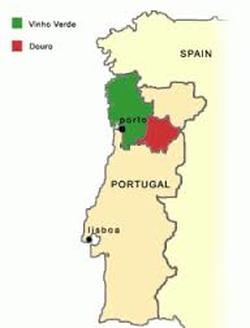 Vinho Verde is the largest DOC (Denominação de Origem Controlada) of Portugal and is located in the northwestern corner. The region grows a variety of grapes in fertile, granite and sandy soils with rainy, humid and cool temperatures created by its proximity to the Atlantic Ocean. This particular rosé is a blend of Vinhão, Azal Tinto and Borraçal grapes. The color is vibrant cherry with strawberry and raspberry aromas that segue onto the palate. It is mildly effervescent with a dry yet creamy mouthfeel. The fresh fruit is nicely balanced with acidity and a hint of citrus zest leads to a crisp finish. Alcohol: 9.5% Price: $8.50 Considering the price of this rosé, it is a great value for quality sparkling wine and proves that one doesn’t always have to spend a fortune to show how much you care. Your heart and love will pair well with any wine! Whether you’re celebrating Valentine’s Day with loved ones, friends, family or just want to celebrate “you”, go ahead and indulge in some chocolates such as champagne truffles and pop a bottle of “pink”!  Have a sweet and bubbly Valentine’s Day! Cheers! Penina  It’s another beautiful day and I’m looking forward to a weekend filled with the World Series, scenic walks and wine tasting.  In some of my recent posts I talked about wines from Portugal. I’d like to mention another winery, Caves Campelo in Barcelos. It is located in the north of Portugal in the Vinho Verde wine region. Although it was established in 1951, there are records dating back to 1923. The company was acquired by José Carlos Lima & Sons in 2007. Caves Campelo offers a wide range of wines such as Vinho Verde, Douro, Dão and Porto wines. I met with Sophia Costa, their export manager who guided me through a tasting of a few of the Vinho Verde wines. We began with Miranda 2014, a ROSÉ wine that was soft pink. It had lovely aromas of fruit and flowers with fresh fruit on the palate. It had a nice mouth feel and was well balanced. The Campelo Adamado 2014 was straw colored with green hues. It had citrus and apples on the nose, with lemon and pear on the palate. The finish was short. The Tapada do Marques Arinto 2014 made with 100% Arinto grape, was “driven” on the nose, but subtle with citrus and floral undertones on the palate. It was quite refreshing. Visit Caves Campelo website for an extensive list of all their wines. www.campelo.pt Have a great start to the weekend!
Happy Friday! Cheers! Penina As much as I would like to discuss the wonderful wine that I had last evening, I will save it for another post. As promised, I’d like to continue my exploration of Portuguese wines.  The Vinho Verde region stretches across the northwest of Portugal which includes nine sub-regions. The popular Alvarinho wines are a specialty of the sub regions Moncao and Melgaco in the northern part of the Vinho Verde region. Lima Cavado and Ave sub-regions are to the south where the main grapes are Loureiro, Arinto and Trajadura.  Quinta da Lixa is an award winning, family run company owned by the Meireles family. It is located in the Sousa sub-region of the Vinho Verde region. Their table was filled with colorful and enticing wine bottles. The Pouco Comum 2014 is 100% Alvarinho. It had floral and fruity aromas with citrus, floral and tropical fruit notes on the palate. It was crisp with a long finish. The Anjos de Portugal 2014 Rosé was quite lively and made with Touriga Nacional and Espadeiro grapes. It was fruity with hints of grapefruit and melon. The Aromas das Castas 2014 is made with Alvarinho and Trajadura grapes. These grapes are considered “two of the noblest “ grape varieties in the Vinho Verde region. The dominant flavor was peach, but hints of pear and herbs came through. It was quite refreshing.  Alexandre Relvas Alexandre Relvas My last stop for today is back in the Alentejo region where I met Alexandre Relvas, of Casa Agricola Alexandre Relvas. He acquired the winery in 1997. It is situated in the municipality of Redondo. In addition to producing around 3 million bottles of wine a year, the owners are dedicated to breeding and conservation of local species. They also breed Merino sheep and sell the wool, which perked my interest as a knitter. Alexandre started me off with a taste of Ciconia Touriga Nacional 2014. This ruby colored wine had intense aromas of dark fruit, earth and spice. The palate offered dark berry, spice and a hint of truffle. It was very smooth with soft tannins. The next pour was Ciconia Reserva Tinto 2013. This red blend of Aragonez, Syrah and Touriga Nacional was filled with ripe berry, spices and medium tannins. It had a richness to it that will certainly improve with age. Although I have to catch up with other wines/countries that I have tasted recently, I will return to Portugal to give you my spin on their wines.
Have a great Thursday! Cheers! Penina  Portugal is located in the Southwest corner of Europe in the Iberian Peninsula. It is the westernmost country of Europe and surrounded by Spain to the North and East and the Atlantic Ocean to the South and West. What makes Portugal so unusual with regards to wine is that it boasts a remarkable number of grape varieties that cannot be found anywhere else in the world. In fact, many of the Portuguese grape varieties are restricted to the national territory. There are 250 indigenous grape varieties officially registered. The Alvarinho, Baga and Touriga Nacional grapes are probably the most widely known by name. Portugal is divided into fourteen Regional Wine areas. Each region has a unique geography and climate, influencing the production of the grapes. I had an opportunity to taste some very interesting wines from these regions at the Wines of Portugal event at the City Winery in New York. Most of the wines I tasted were blended, using several national grape varieties, as is their tradition to combine grape varieties rather than use 100% grape. In fact, some winemakers will blend more than twenty varieties to attain the perfect balance. However, there are a few regions that boast a single variety grape, such as Bairrada, using the Baga grape (red) and Moncao/Melgaco in the Vinho Verde region, using the Alvarinho grape (white). The most “popular” of the white grapes are Alvarinho, Arinto/Pederna, Encruzado and Fernao Pires/Maria Gomes. The popular red grapes are Baga, Casteao, Tinta Roriz, Touriga Franca, Touriga Nacional and Trincadeira/Tinta Amarela. As I traversed from table to table and region to region I was introduced to a variety of blends. There were 30 tables, with many bottles to sample at each table. Most of the whites were refreshing, a few sparkling wines stood out, as well as some hearty reds and port. My objective with my post today is to touch upon a few of the regions and wineries and to discuss the rest in future posts. Adega de Redondo is one of the largest wine producers in Portugal and is located in the Alentejo wine region which covers a third of Portugal in the southern half. The climate is hot and quite challenging to grow white grapes. I met with Alexandre de Cunha who guided me through a tasting of their wines. I took note of the AR Reserva 2011 made with Touriga Nacional, Syrah and Alicante Bouschet. The color was deep red with intense aromas of dark fruit and cocoa that carried over to the palate. Tannins were strong and he suggested decanting it for an hour prior to serving. The Real Lavrador Branco 2014 was a white wine made with Roupeiro and Rabo de Ovelha grapes. It was dry and zesty but pleasant with citrus and fruit on the palate. The next table offered wines from the region of Porto and Douro. The winery, Quinta Do Portal, is based in the Douro Valley of northern Portugal. Douro was the first wine region to be designated and regulated in 1754. It is also a UNESCO World Heritage site. Douro, known for supplying the world with its production of port is now being regarded for its unfortified wines. Quinta Do Portal has a lovely sparkling wine. It was very appealing, dry and fruity. The Touriga Nacional (100%) 2009 was dark ruby with heavenly aromas of dark fruit. Raspberry and dark currant dominated the palate. Strong tannins made for a chewy finish. The 10-year-old Tawny Port was cherry red in color and was a nice combination of sweet and nuttiness with a long finish. 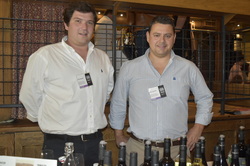 Carlos Queiros and Filipe Ferreira Carlos Queiros and Filipe Ferreira Quinta Da Foz also located in Porto and Douro was established in 1876 and one of the oldest producers in the Douro. I asked Carlos Queiros to select one wine for me to taste. He poured a Red Reserva 2011, a red blend of very old vineyards. Vinified in granite tanks, it is then aged for 18 months in French oak barrels. Although the tannins were “thick”, the fruit and smokiness came through. It is unfortunate that I didn’t have time to wait for it to open up. And speaking of time, I must end this post with the promise that I will continue tomorrow covering more regions and vineyards.
Saúde! Penina  Rain, rain, go away! I woke up this morning to a torrent of rain. But, that didn’t stop me. I donned my raincoat and rain boots, then headed out the door to complete my “to do” list, wishing I had grilled vegetables last night instead of waiting to do it today. Ugh…  I had so much to do yesterday, that by the time I arrived home, I was feeling sluggish from the heaviness in the air. When “cocktail hour” rolled around, I thought ice-cold vodka would be nice. However, I forgot that my freezer was “vodka” empty. And my “source” was not delivering more for at least another day. I settled for juice. 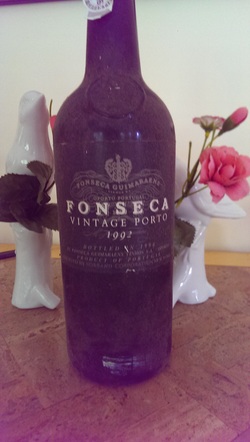 Later on in the evening a friend came over to watch a movie with me. As the hour seemed too late to open wine, we decided to sip on some 1992 Fonseca Vintage Porto. I have reviewed this delicious port a few times. You can find the reviews in the Archives. Alas, this is my last bottle. It’s time to buy more port. By the way, we watched St. Vincent. Good movie…  It has stopped raining and I need to get the grill going before the next round of storms come through. Baked salmon, grilled vegetables and a good bottle of wine are on the menu for this evening! Happy Tuesday
Cheers! Penina  Last night I decided to bring a little “cheer” into the house. And with the help of a friend, we decorated a tree with tiny twinkle lights and pearls. I admit it is not much in the way of holiday decoration, but it seems festive enough thus far.  Afterwards we sat on the sofa and drank Fonseca, admiring our haphazard handiwork and having a good laugh. He was a good sport to help me! 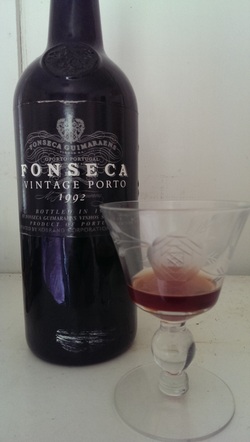 Here is my review of Fonseca from a previous post…just in case you missed it. It was Fonseca Vintage Porto 1992. Fonseca was founded in 1815 and is considered one of the leading Port wine companies. I opened this particular bottle about a year ago. Robert Parker gave it a 97. I tasted black fruits, licorice and spices. My nose was filled with plum and nuts. The finish was long. This full-bodied port is said to be drinkable through 2035. Thank goodness that I have another bottle waiting in the wings! Check out the website: http://www.fonseca.pt/ Have a great start to the weekend!
Cheers! Penina  It’s a beautiful time of year and I am hoping to take advantage of it this weekend. It’s a great time to take a nature walk or go apple picking. 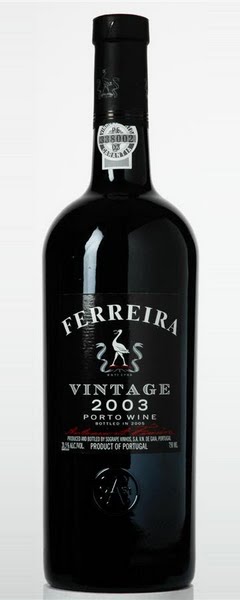 I tasted a very nice port a few nights ago. It was a 2003 Ferreira Vintage Port. This lovely port blend was a deep garnet color. The aromas of fruit, licorice and caramel leapt from my glass. It had the typical sweetness of port and the flavors were powerful, ranging from cherries, fig and blackberry to hints of licorice. Wonderfully long finish! You can learn more about it at: http://eng.sograpevinhos.com/visitas/cave/6 Now on to the festivities of the weekend!
Cheers! Penina  It’s another rainy day and I’m trying to stay on task with a few projects. 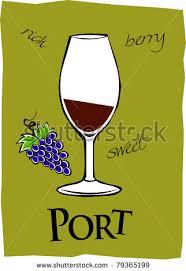 However, all I want to do is curl up with a good book and a glass of port. Not happening! 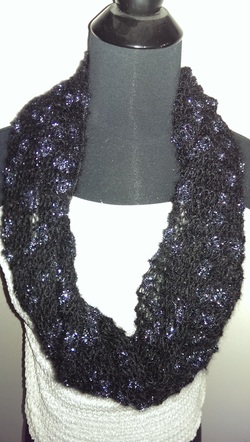 I finished my knitting project….sort of. I’m trying to decide if I should add Swarovski crystals or fringe. What do you think? It certainly has enough sparkle in it. Hmmm…. 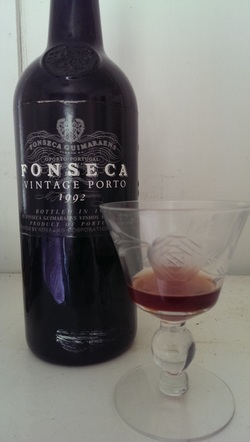 Well, back to work. Much to do! Perhaps I will indulge myself with a little Fonseca later this evening. Cheers! Penina Last night I poured myself a little port. It seemed to be the perfect setting with a torrential thunderstorm pounding outside. Albeit, it was hot and humid so I suppose “perfect” would have been sitting in front of a roaring fire instead of blasting the air conditioner! I had a very nice port from Portugal. It was Fonseca Vintage Porto 1992. Fonseca was founded in 1815 and is considered one of the leading Port wine companies. I opened this particular bottle about a year ago. Robert Parker gave it a 97. I tasted black fruits, licorice and spices. My nose was filled with plum and nuts. The finish was long. This full-bodied port is said to be drinkable through 2035. Thank goodness that I have another bottle waiting in the wings! Check out the website: http://www.fonseca.pt/ 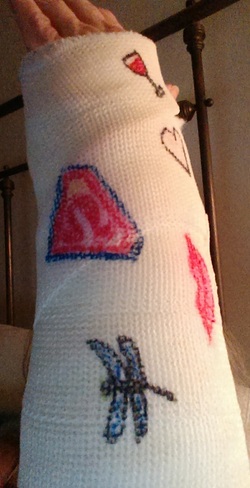 Three more days of wearing a cast and then we begin some fun with knitting. Have a great day!
Cheers! Penina |
Categories
All
|

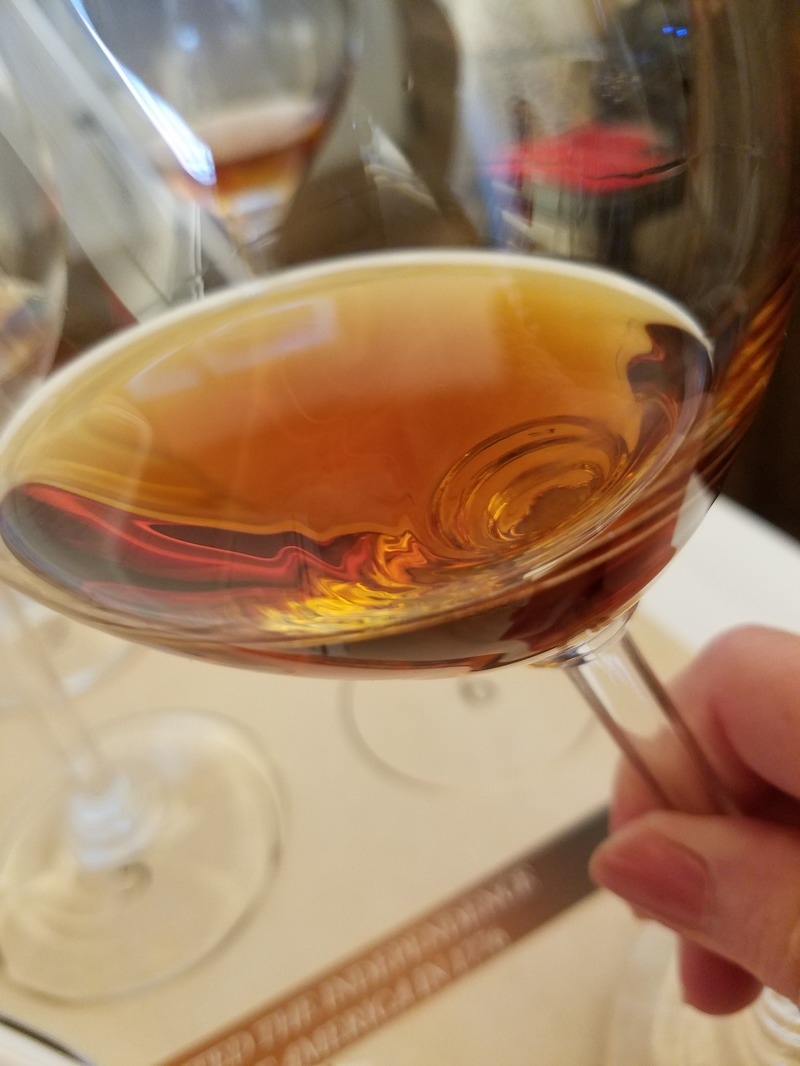
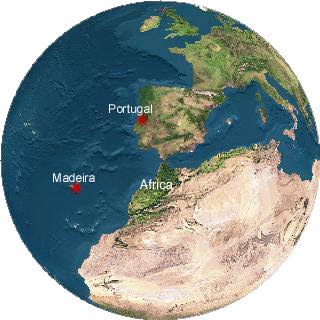
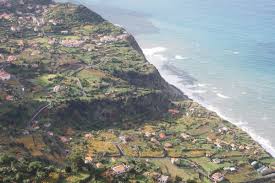

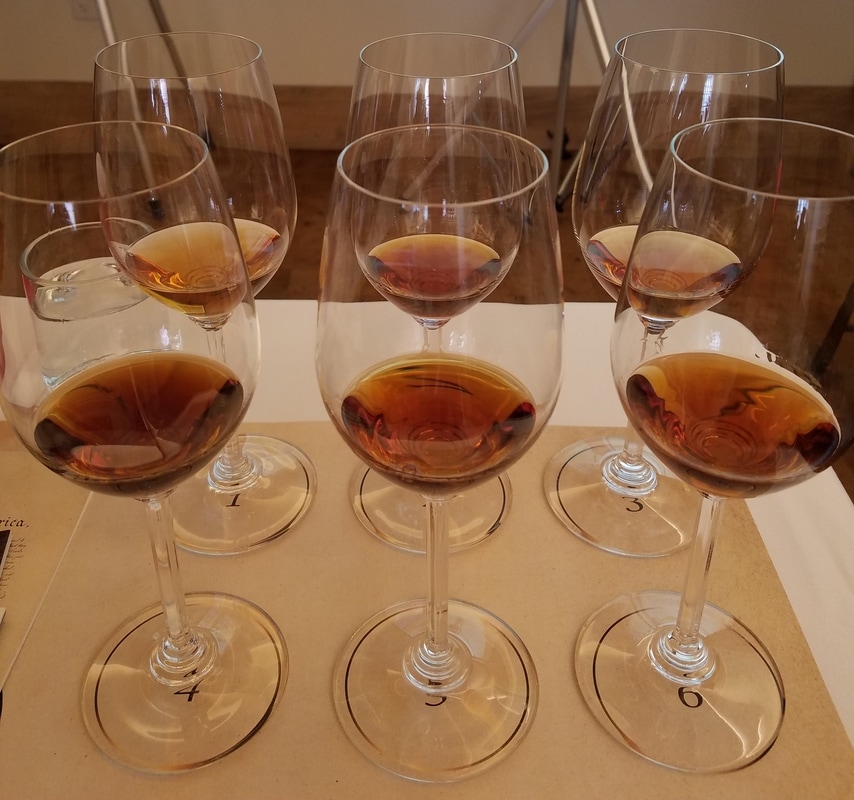
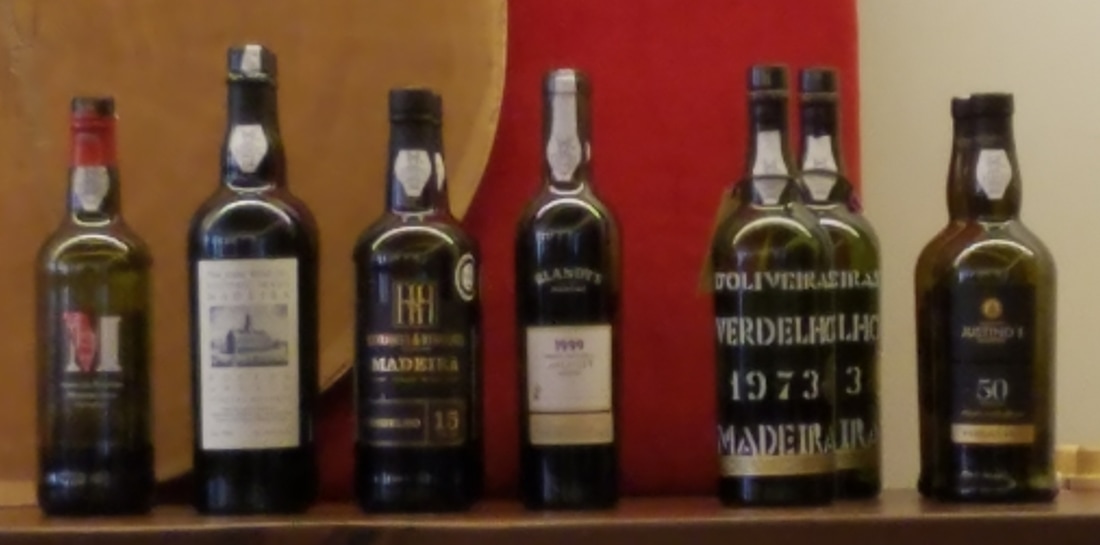

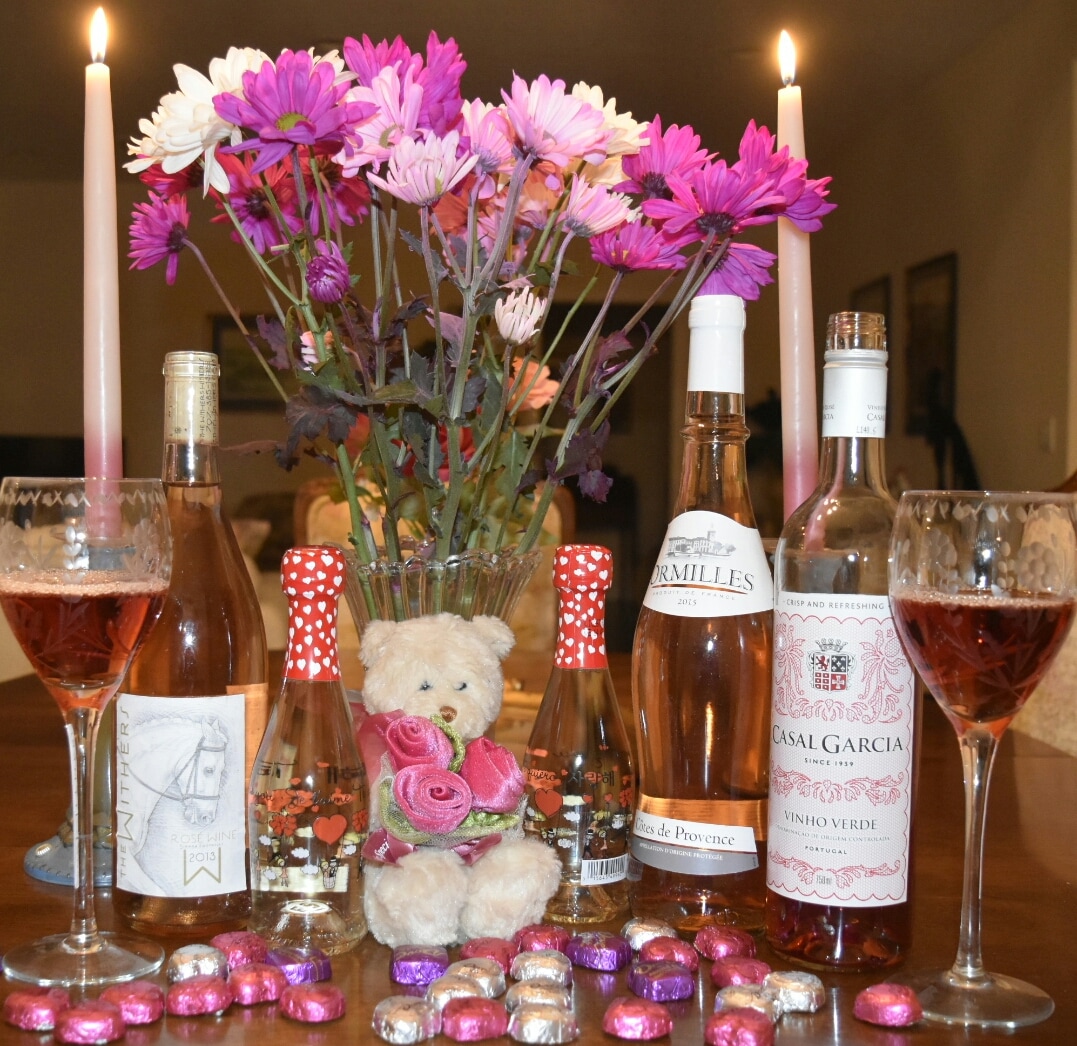
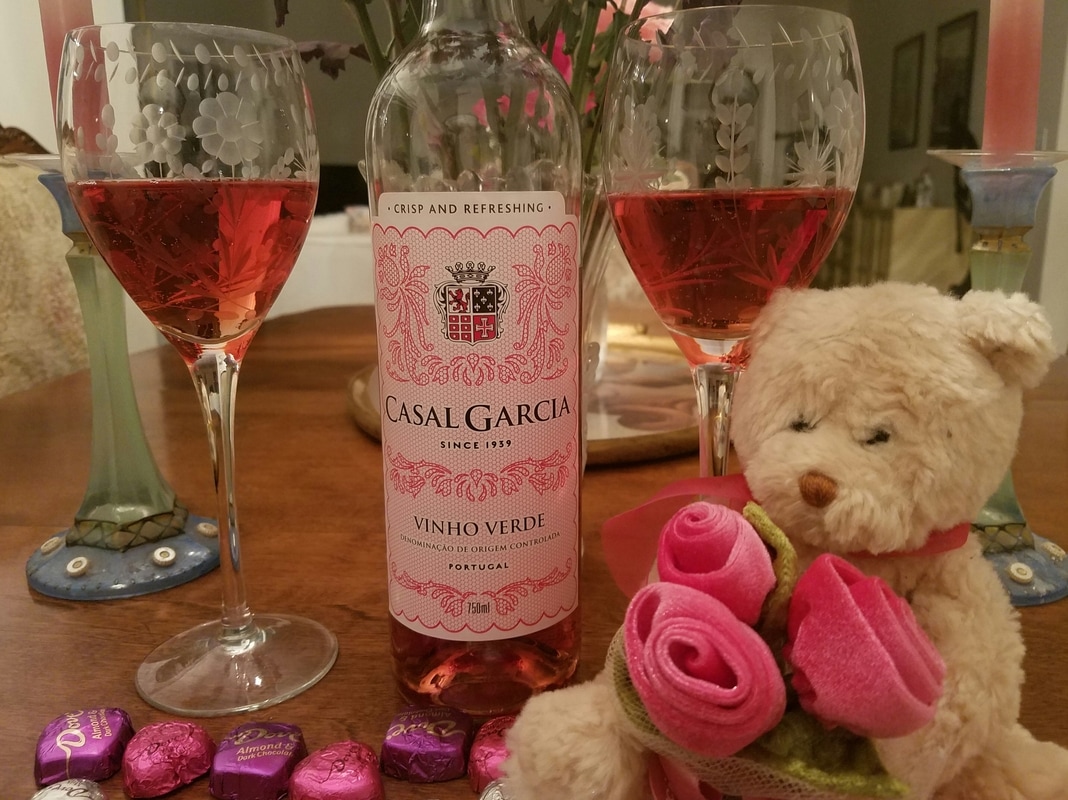

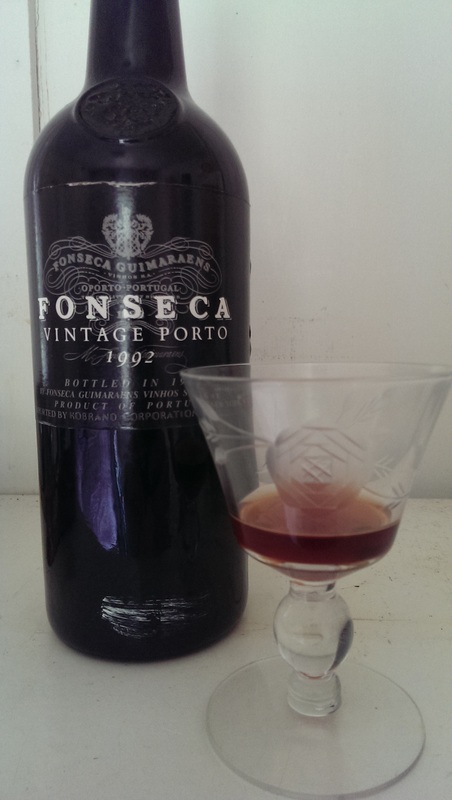
 RSS Feed
RSS Feed